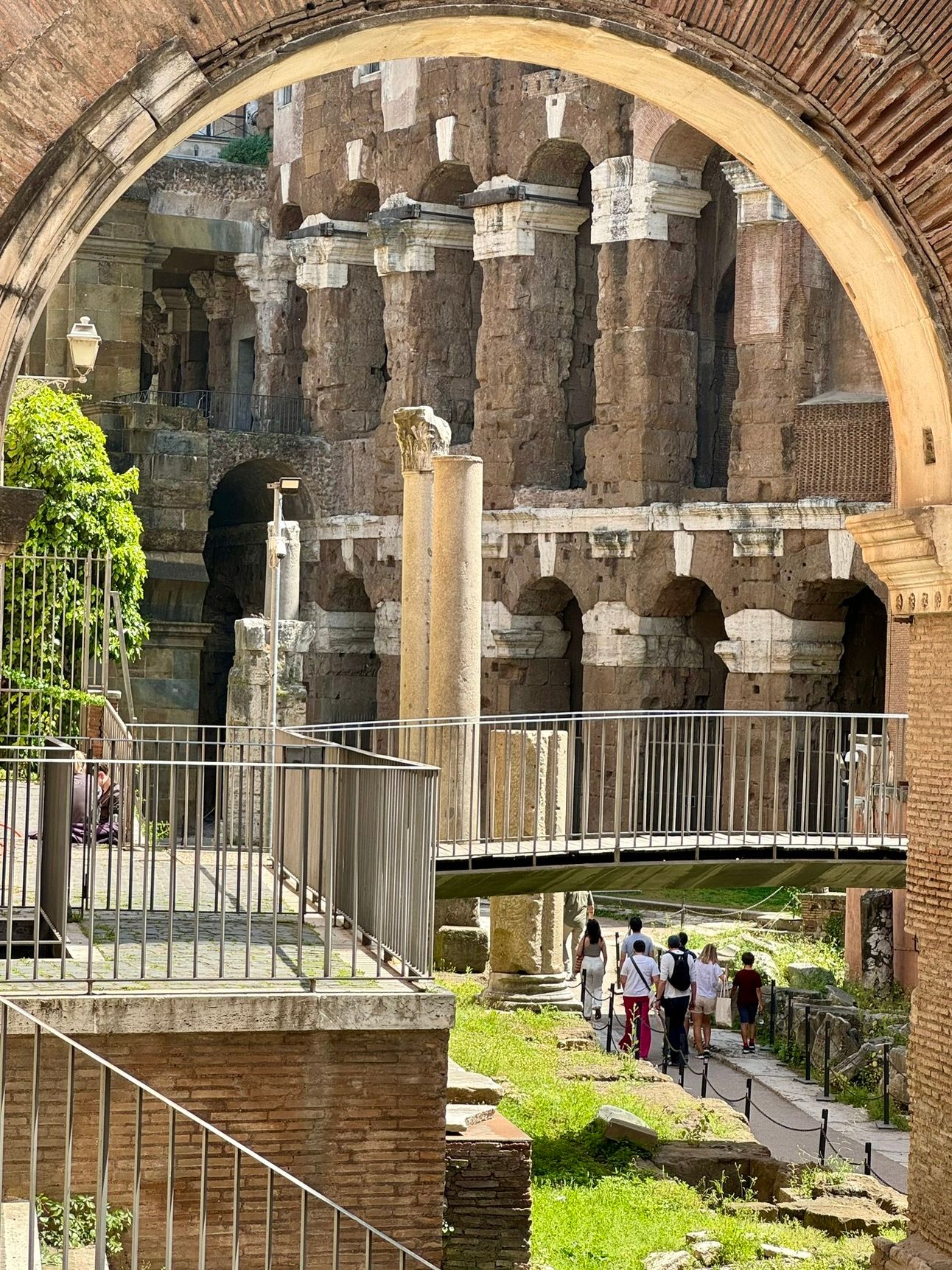There are countless hidden treasures in Rome that would take a lifetime to discover, which is why the eternal city is a never-ending source for wonderful stories about history, people, hidden corners, neighbourhoods, restaurants and shops.

Pasticceria Boccione, brown door on the left
A bakery that is 210 years old
Easy to miss, except for the sack truck always sitting beside the front door, is an unassuming bakery, often referred to as “the grumpy sister’s bakery.” There are three sisters. There is no signage because people just know that it is the grumpy sister’s bakery, which explains the queue waiting patiently to enter the tiny shop. This is Pasticceria Boccione, the Jewish Quarter’s oldest surviving bakery that opened in 1815 by the Limentani family. Their signature dish is the delicious ricotta and wild cherry tart made to a recipe thought to date back 2,000 years. As a result of a papal decree in the 18th century banning the Jewish community from selling or trading dairy products, they ingeniously hid the ricotta beneath a pastry crust and mixed it with cherries.
The oldest Jewish community in Europe
The Jewish Quarter in Rome is a unique neighbourhood in the historic centre that has a history of tragedy.
The earliest Jews arrived in Rome in the second century BC seeking protection from the persecution of Syrian King Antiochus. Two centuries later, Rome invaded Judea and thousands of Jewish prisoners of war were brought back as slaves, soon given freedom after their ransoms were paid by the existing Jewish community. The number of Jews in Rome slowly grew and the community settled across the river Tiber in the Trastevere neighbourhood.
However, the fall of the Roman Empire and the rise of Christianity led to increased antisemitism and in 1955 Pope Paul IV created the Roman Ghetto. The Jewish population was moved to a walled, gated district subject to frequent flooding, given its proximity to the Tiber river. They were confined within the ghetto for more than 300 years until the walls were finally torn down in 1848. It wouldn’t be until the 1870s that the Romans would build the embankments to stop the river from flooding.
The neighbourhood witnessed one of the most heart wrenching times of the Nazi occupation during the Second World War. The German government declared that Rome’s Jews would be spared deportation to the concentration camps if a gold ransom was paid. They managed to raise the money with help from the non Jewish community. Despite this, Nazi soldiers entered the ghetto on 16th October 1943 and took more than 2,000 people away. Only 16 survived.
As you walk the narrow streets, you can see polished brass plaques called stumbling stones embedded into the cobblestones outside the homes of the victims. They serve as a memorial with the name of the person, date of birth, date taken and the date that they died engraved into the brass plate.

Today, 13,500 members of the Jewish community live in Rome, but most have left the Jewish Quarter to live elsewhere. What you see today is not what the ghetto would have looked like. Most of the buildings today date back to the 19th century.
The Great Synagogue in the Jewish Quarter is the largest in Rome and possibly all of Italy, but now there are many scattered across the city. Within the Great Synagogue is the Jewish Museum of Rome which tells the story of Jewish life in Rome since the earliest settlement in the second century BC. The city’s Jewish school and a Jewish bookstore are also in the neighbourhood.
Jewish food
The most notable Jewish Roman dishes originate from the years of the ghetto’s curfew between the 1500s and the 1800s when the three gates of the neighbourhood were locked after sunset by law. They utilised what were then thought of as humble ingredients - artichokes, codfish and zucchini. Carciofi alla giudia, or Jewish style artichokes, are a spring delicacy that are deep fried and served golden brown and crispy. Simple, yet delicious, they are perhaps the best known dish to come from the ghetto and one of the most characteristic foods to eat in Rome. The season is brief, though, lasting from February to April.
Along Via del Portico d’Ottavia, there are many popular restaurants serving this specialty. One of my favourites for lunch is Nonna Betta. Anthony Bourdain famously said in the restaurant one day that “life is too short to get the wrong artichoke”, which is now a sign next to the front door. Umberto, Nonna Betta’s grandson and owner of the restaurant, continues the tradition as the third generation and now has his daughter working alongside him. Umberto’s grandmother lived in the Jewish Quarter and his mother lives across from the restaurant.

Portico d’Ottavia
The ruins of the ancient Portico d’Ottavia rise from twenty feet below the street surface. It is a group of ancient monuments rebuilt by Emperor Augustus around 27 BC and dedicated to his sister, Octavia. Over the centuries it has survived fire, had its marble and artworks pillaged and was used as a fish market from medieval times to the end of the 19th century.
Teatro Marcello
Named after Marcus Marcellus, nephew of Emperor Augustus, who died five years before its completion, Teatro Marcello was begun by Julius Caesar and completed by Emperor Augustus in 13 BC, making it older than the Colosseum, completed in 80 AD. This ancient, open air theatre once held approximately 11,000-20,000 spectators who filled the seats to watch acting, dancing and singing performances. Today, the theatre still holds performances throughout the summer. The upper floors have been converted into apartments. Very expensive apartments.

Ci vediamo la prossima settimana.
Deb
